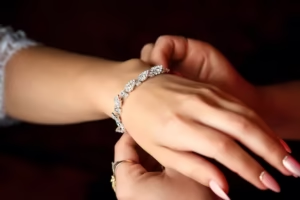Hair pulling disorder, also called trichotillomania, is a condition that is frequently misunderstood, rarely discussed, and yet has a significant impact on those who experience it. Remember that you are not alone if you or a loved one suffers from compulsive hair pulling, and more significantly, there is effective treatment available.
This thorough guide examines the causes, signs, and most effective hair pulling disorder treatments. Our mission is to assist people in regaining control over their actions and emotional health by offering them hope, clarity, and practical solutions.
Hair pulling disorder: what is it?
A person with trichotillomania has intense cravings to remove their hair, usually from the scalp, eyebrows, eyelashes, or other areas of their body. In the DSM-5, it falls under the category of obsessive-compulsive and related disorders.
Many people view hair pulling as more than just a “bad habit.” It is an obsessive behavior that can be triggered by stress, anxiety, boredom, or even pleasure. It can eventually cause noticeable skin damage, hair loss, embarrassment, and loneliness.
Typical Indications and Symptoms
Healing begins with acknowledging the signs of trichotillomania. The following are a few typical signs:
Repeatedly removing hair from the arms, pubic region, lashes, eyebrows, or scalp
noticeable areas of thinning or baldness
Ritualistic conduct (such as examining or teasing with a pulled hair)
Tension building up before pulling and relief or satisfaction following
Making an effort to stop but feeling helpless
Due to hair loss, avoiding social situations
It is crucial to remember that each person’s experience with trichotillomania is unique. In stressful situations, some people may pull intentionally, while others may pull unconsciously.
Why Do People Get Trichotillomania?
Researchers think that trichotillomania is caused by a confluence of biological, psychological, and environmental factors, though the precise cause is still unknown:
Genetics: An increased risk may result from a family history of anxiety or OCD.
Brain chemistry: Impulse control may be impacted by serotonin or dopamine imbalances.
Stress and Trauma: Many people say that their symptoms began when they were experiencing a lot of emotional stress or trauma.
Personality traits that are frequently observed include sensitivity to stress, low self-esteem, and perfectionism.
Hair Pulling’s Emotional Effects
In addition to its physical consequences, hair pulling disorder has a significant emotional cost. Those who suffer from trichotillomania frequently have:
Embarrassment and guilt at their failure to stop
Fear of looking good and being accepted by others
Depression brought on by loneliness and persistent difficulties
Lack of confidence and low self-esteem
Stress causes pulling, which in turn causes shame, which in turn causes more stress. These emotional repercussions can exacerbate the cycle.
Effective Treatments for Hair Pulling Disorder
Thankfully, trichotillomania is curable, and with the correct mix of counseling, lifestyle modifications, and occasionally medication, many people see notable improvements. The best ways to treat hair pulling disorder are broken down as follows:
1. Cognitive behavioral therapy, or CBT
Most people agree that CBT is the best way to treat trichotillomania. It assists people in recognizing and altering the mental processes and situations that cause hair pulling.
Benefits: Recognize your emotional cues
Create more wholesome coping strategies
Increase awareness of the practice of hair pulling
2. HRT, or habit reversal training
As a type of behavioral therapy, HRT assists in substituting a less damaging behavior for hair pulling. Typically, it entails
Training for awareness: Developing an awareness of pulling desires
Competing response: Using an alternate action (such as clenching fists or playing with a stress ball) in place of pulling.
Techniques for relaxation: lowering tension to lessen cravings
For a more thorough strategy, HRT and CBT are frequently combined.
3. ACT, or acceptance and commitment therapy
Accepting one’s thoughts and feelings without acting upon them is a lesson taught by ACT. It’s particularly helpful for lessening the shame and guilt that frequently accompany trichotillomania.
Through an emphasis on values-based living, ACT supports individuals in pursuing worthwhile objectives despite discomfort.
4. Meditation and a Mindful Approach
By practicing mindfulness, people can improve their emotional control and become more conscious of their automatic behaviors. Techniques like body scans, deep breathing, and mindful movement can help people feel less anxious and more at ease.
5. Pharmaceuticals
Medication may help in certain situations, particularly if trichotillomania co-occurs with anxiety or depression. The following are typical choices:
Selective serotonin reuptake inhibitors, such as fluoxetine (Prozac),
An effective tricyclic antidepressant is clomipramine.
A natural supplement that has demonstrated promise in lowering hair-pulling cravings is N-acetylcysteine (NAC).
In most cases, medication works best when combined with therapy rather than as a stand-alone treatment.
6. Internet communities and support groups
It can be extremely therapeutic to share experiences with people who are sympathetic to your plight. Online or in-person support groups offer the following benefits:
Inspiration and affirmation
Useful recommendations and pointers
The feeling of belonging and community
There are helpful resources for locating support on websites such as the Trichotillomania Learning Center (BFRB.org).
7. Self-Care and Lifestyle Modifications
Managing hair pulling disorder can be greatly aided by making small, regular adjustments to daily routines:
Get enough rest because fatigue impairs impulse control.
Consume a well-rounded diet because healthy eating promotes brain function.
Remain active: Physical activity elevates mood and lowers anxiety.
Reduce stress by practicing relaxation methods such as yoga, journaling, or soothing music.
8. Utilizing Barriers and Tools
Using tools or physical barriers to deter pulling helps some people:
putting bandages or gloves on your fingers
Keeping hair covered or secured
Distractions such as textured objects or fidget toys
Using nail polish that tastes bitter
While these tools can offer instant assistance during times of high urgency, they do not address the underlying cause.
Therapy for Youth and Adolescents
Early intervention is essential because trichotillomania frequently starts in childhood or adolescence. Younger patients may receive the following types of treatment:
The use of play therapy
Parents’ participation in behavior plans
Age-appropriate methods for HRT or CBT
For a child to recover, it is essential to establish a supportive, nonjudgmental environment at both home and school.
Is it possible to cure hair pulling disorder?
There isn’t a universal “cure,” but with the correct course of treatment, many people find long-lasting relief. The objective is to create a satisfying life outside of the disorder and lessen the frequency and severity of cravings.
Setbacks happen, and that’s okay. Recovery is not a straight line. Persistence, encouragement, and self-compassion are crucial.
When to Call for Assistance
Hair pulling, if it is:
Inflicting psychological pain
causing obvious skin damage or hair loss
disrupting your day-to-day existence
Now is the moment to ask for assistance. Consult a certified mental health practitioner with expertise in body-focused repetitive behaviors (BFRBs).
Last Remarks: You’re Not by Yourself
Contrary to popular belief, trichotillomania is not a cause for shame. It’s critical to keep in mind that recovery is achievable, regardless of whether you’re going through a difficult time yourself or are helping someone else.
You can regain by hair pulling disorder treatment and live a happy, self-assured life with the help of peers and professionals, as well as evidence-based therapies like CBT, HRT, and ACT.
- Hair Pulling Disorder Treatment: Proven Strategies That Work
- Explore effective Hair Pulling Disorder treatment options including therapy, medication, and self-help tips to manage trichotillomania and reclaim control.
- Hair Pulling Disorder treatment
Related posts:
No related posts.



